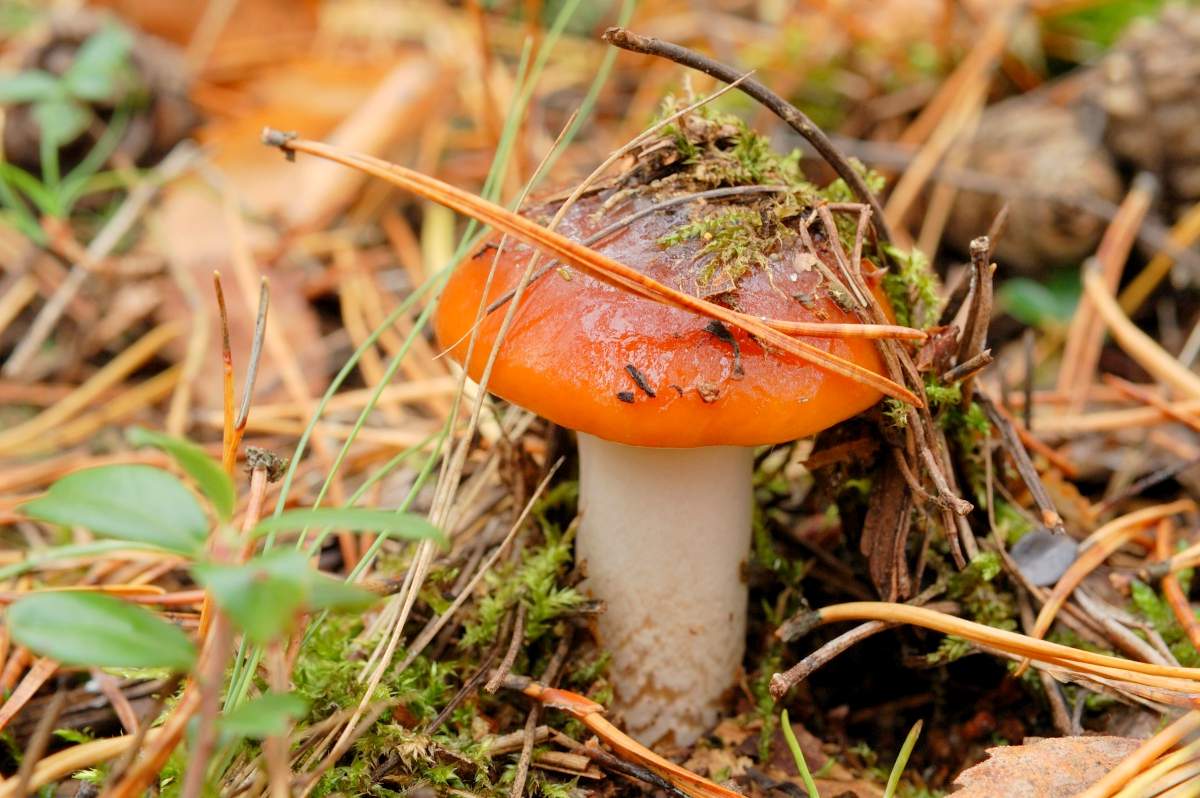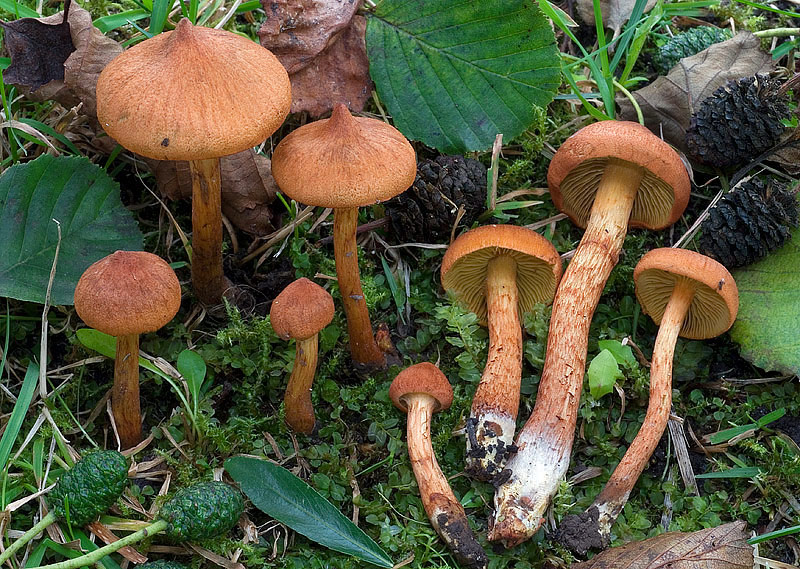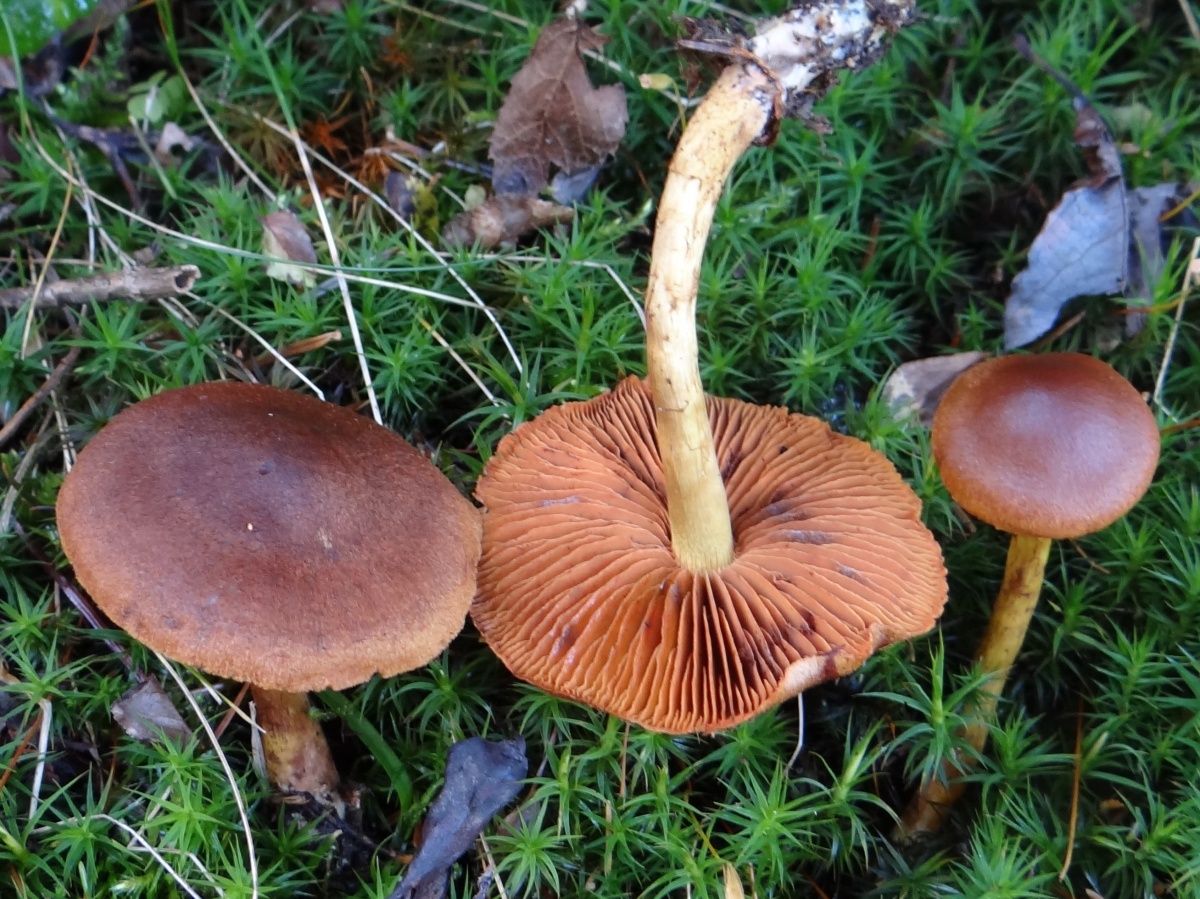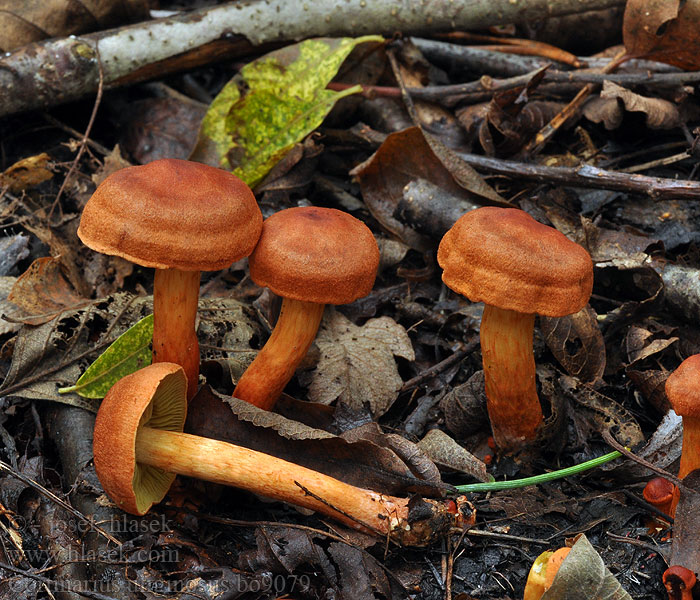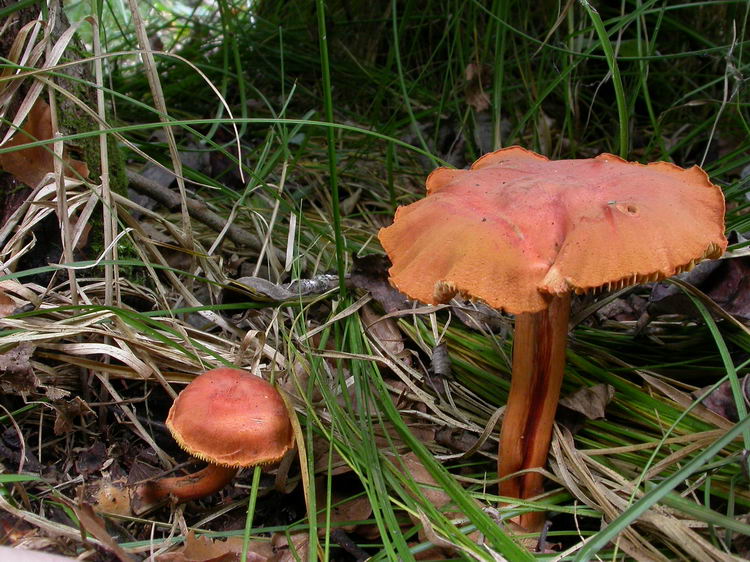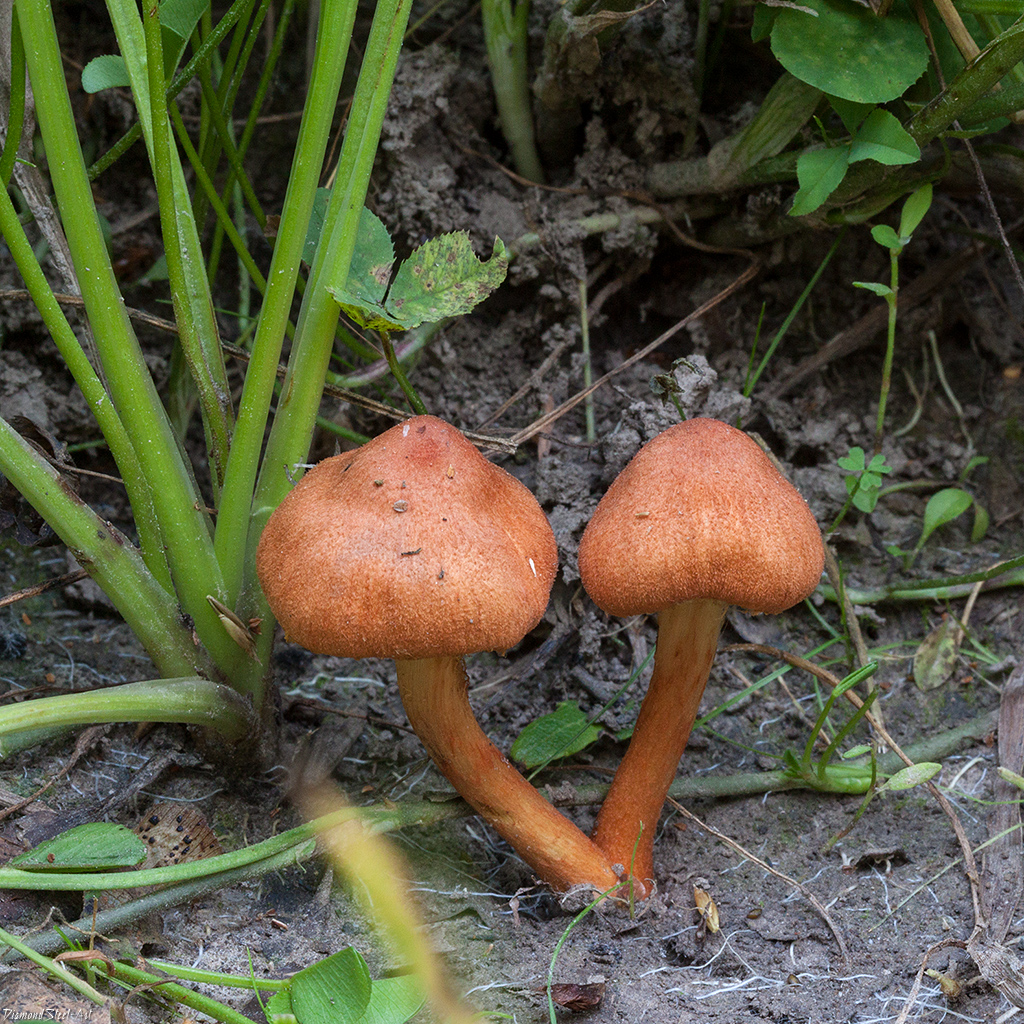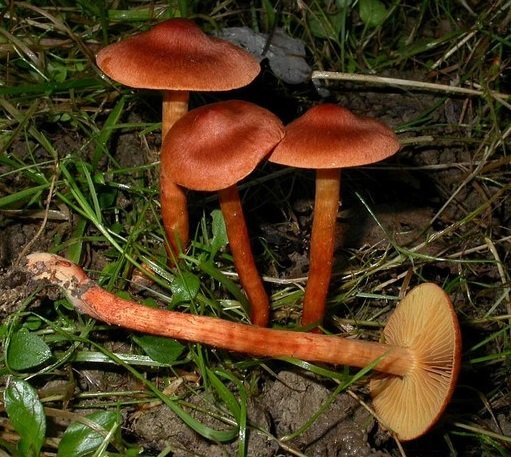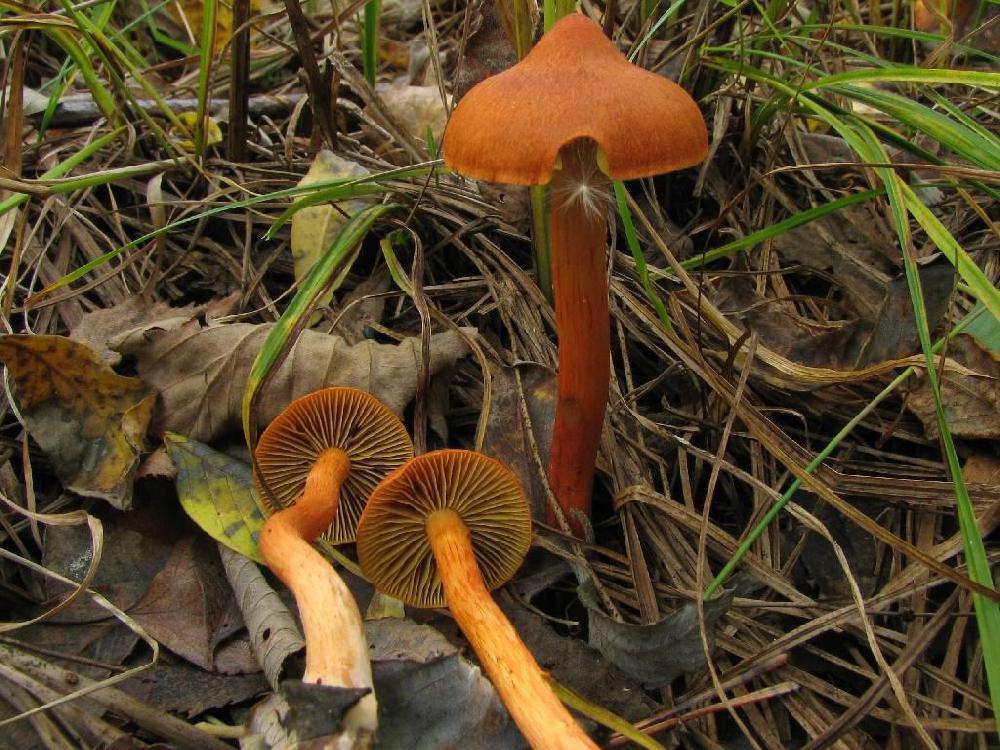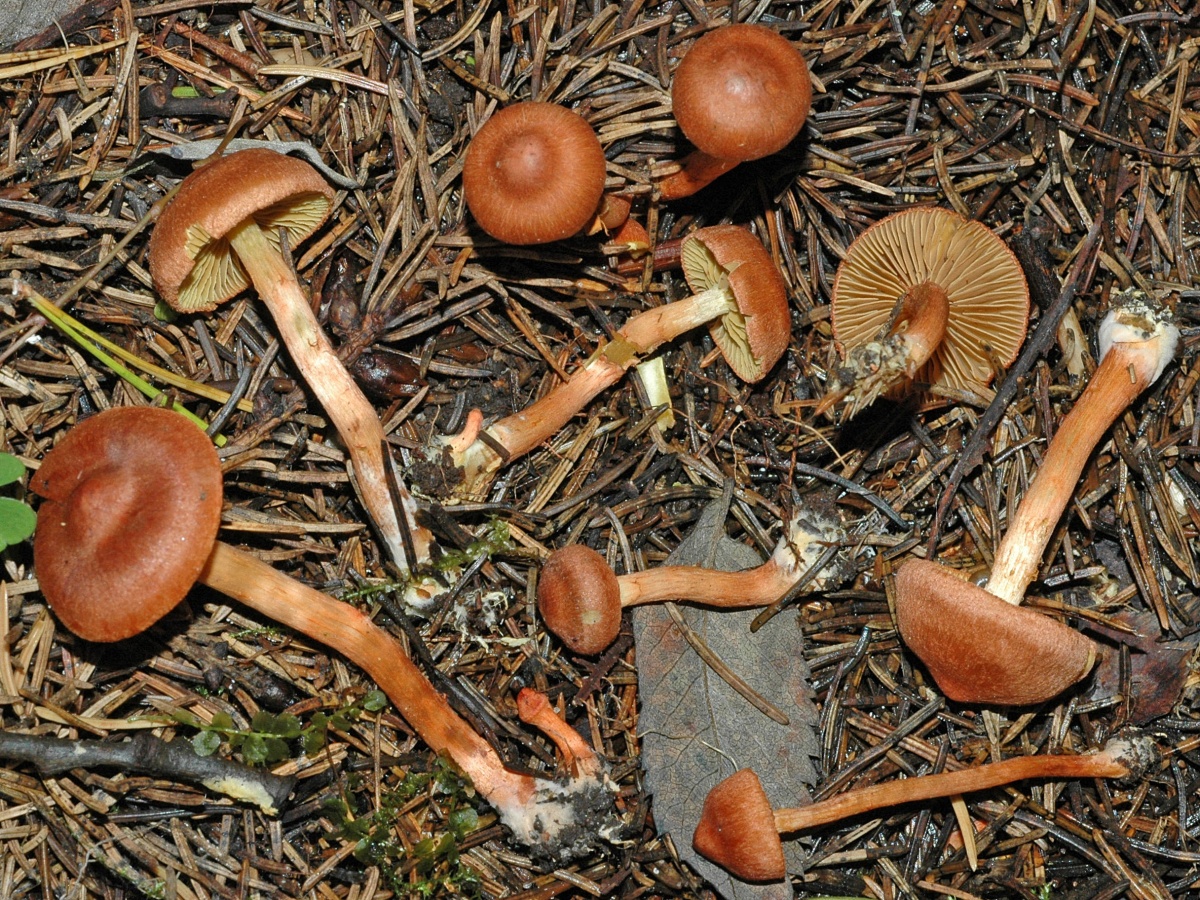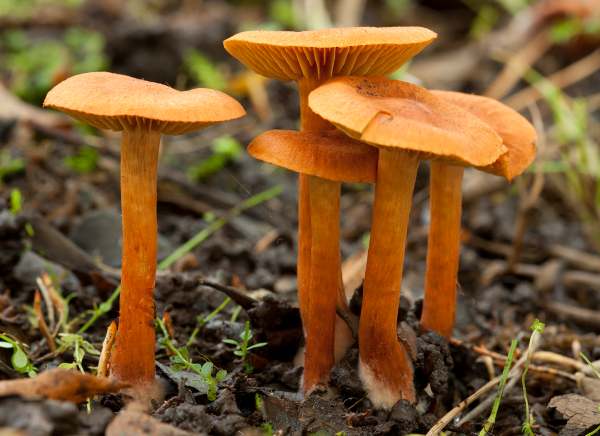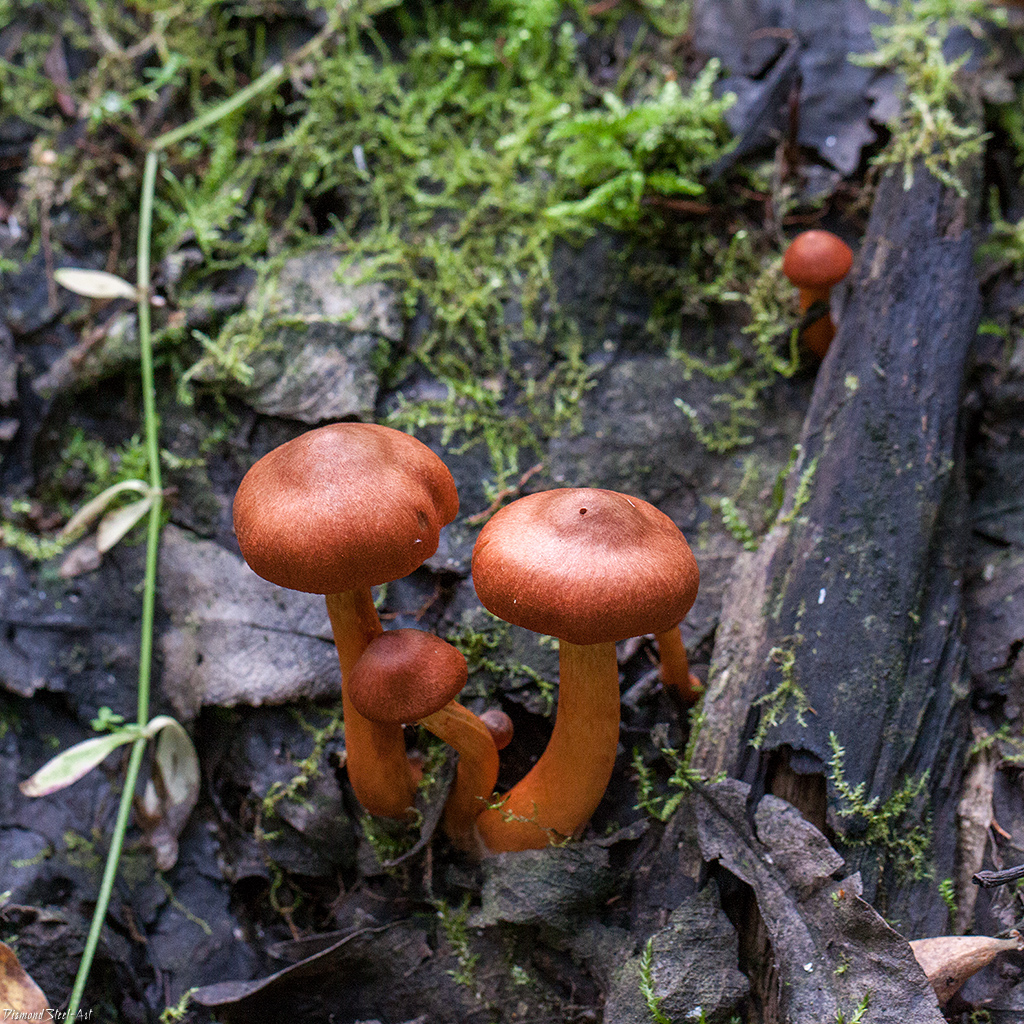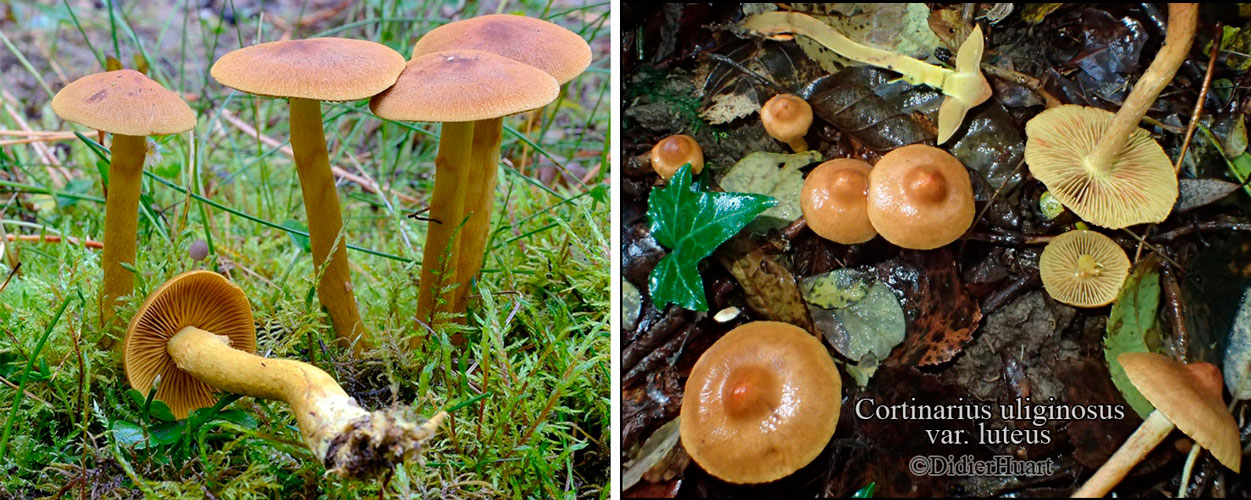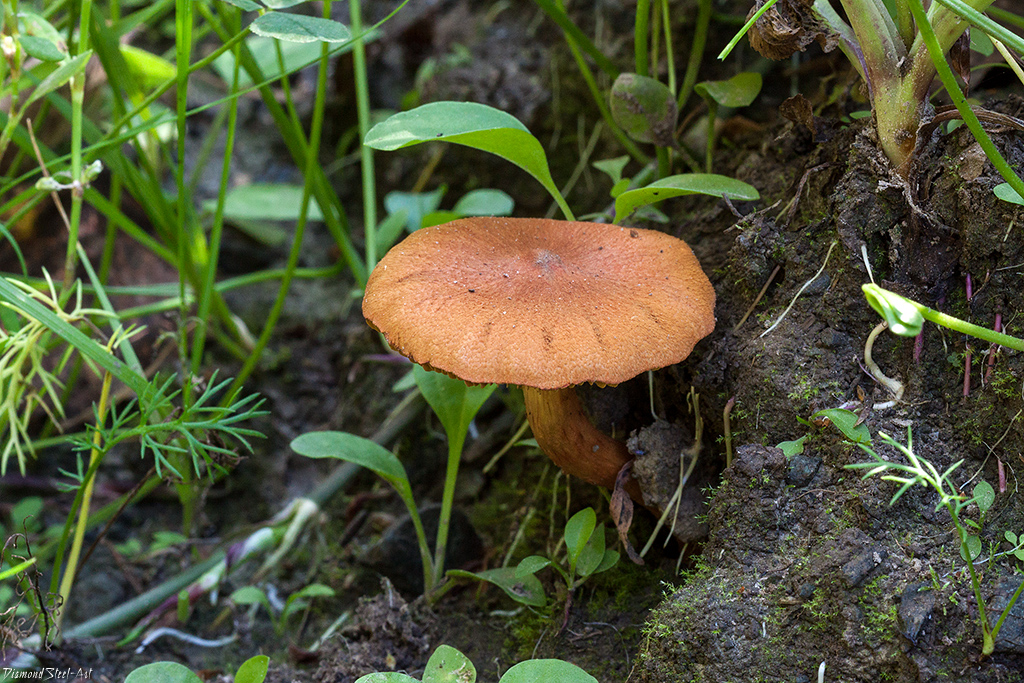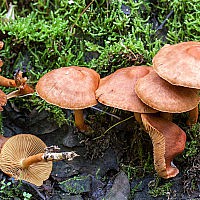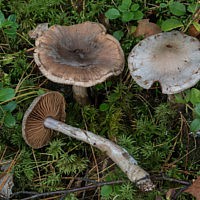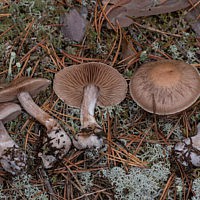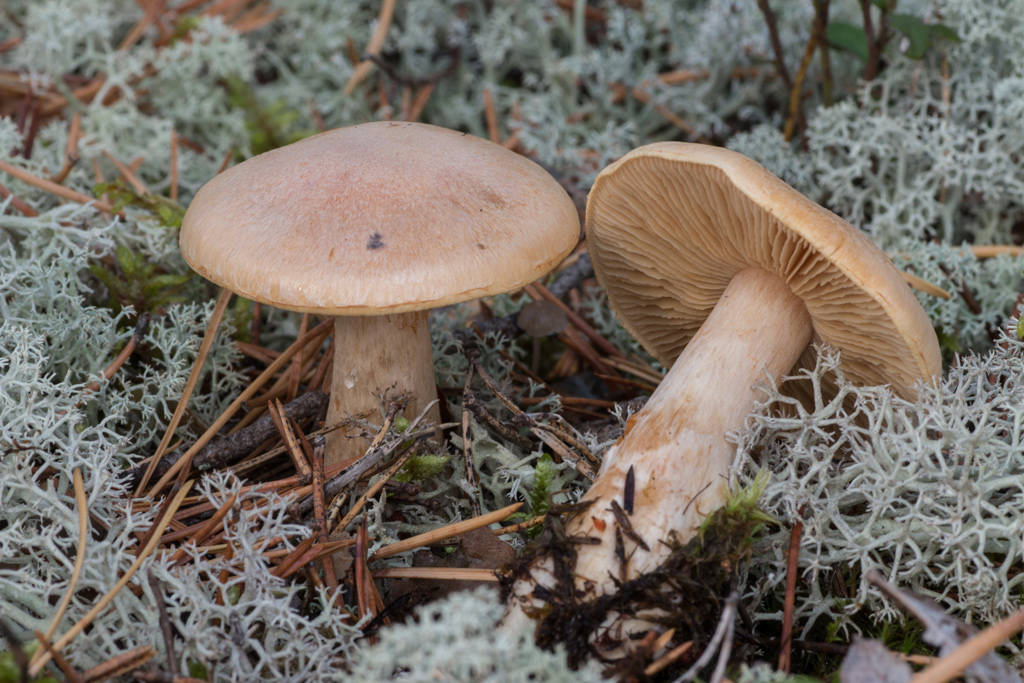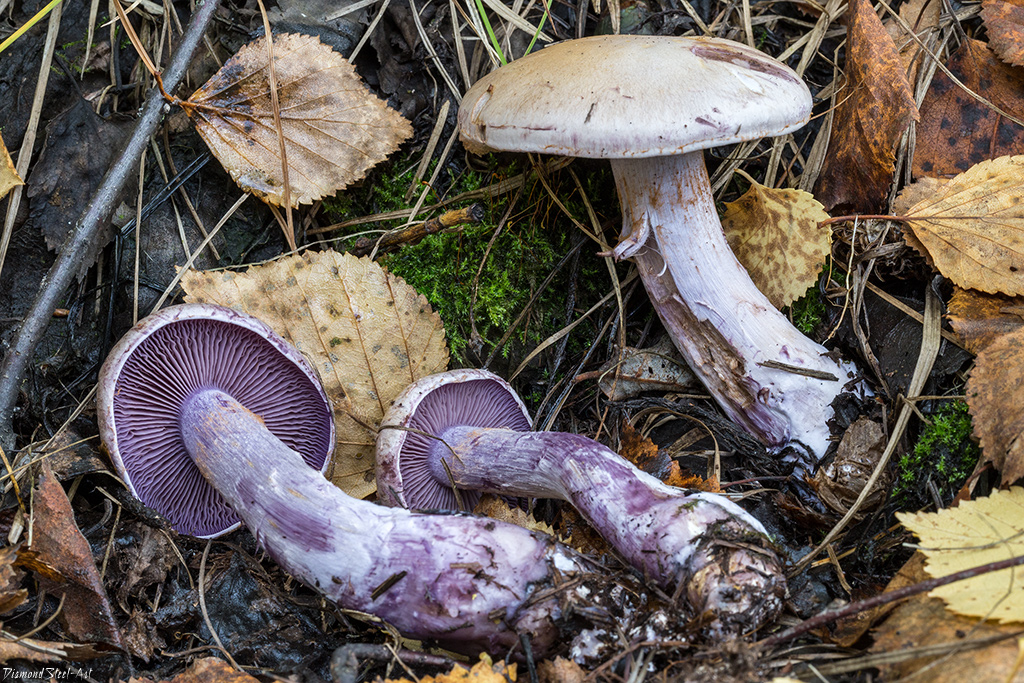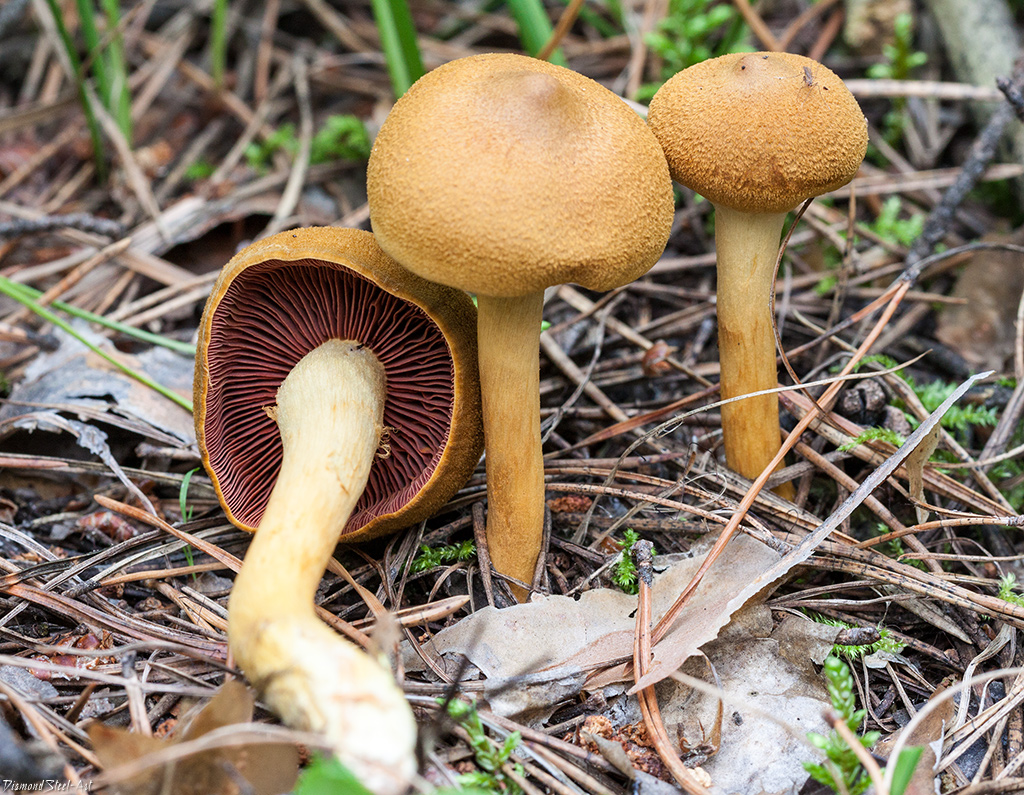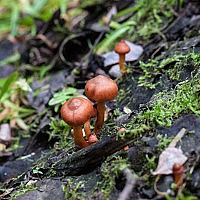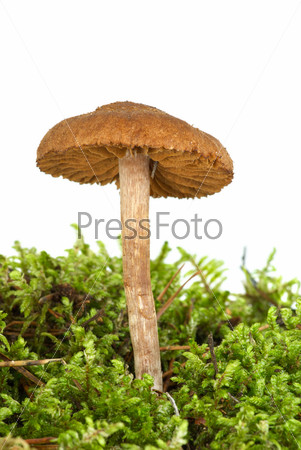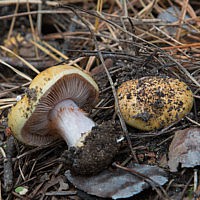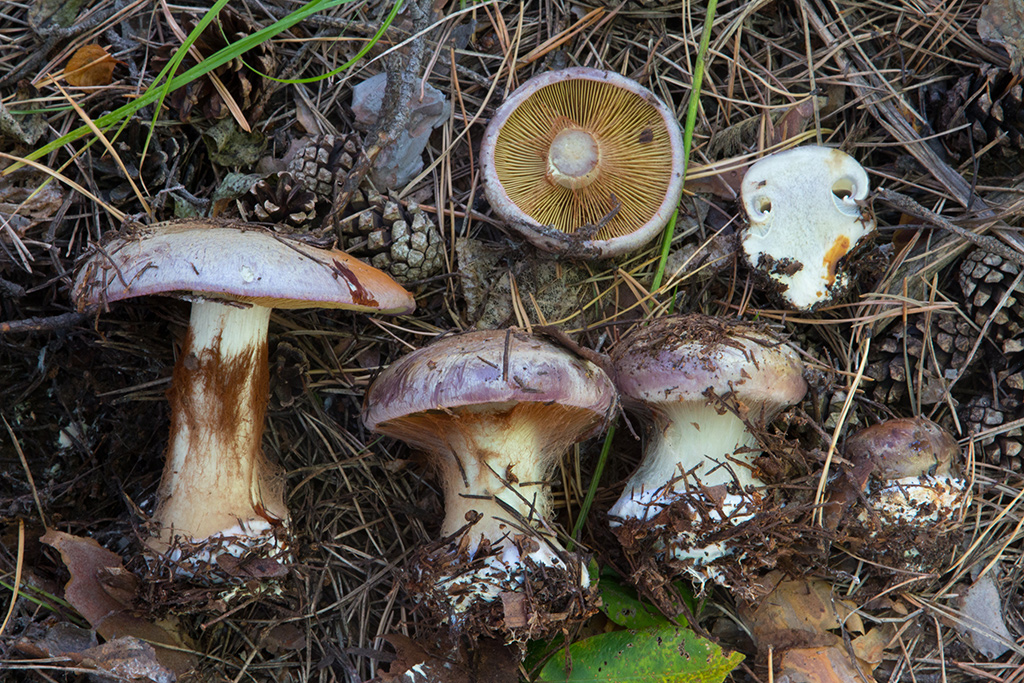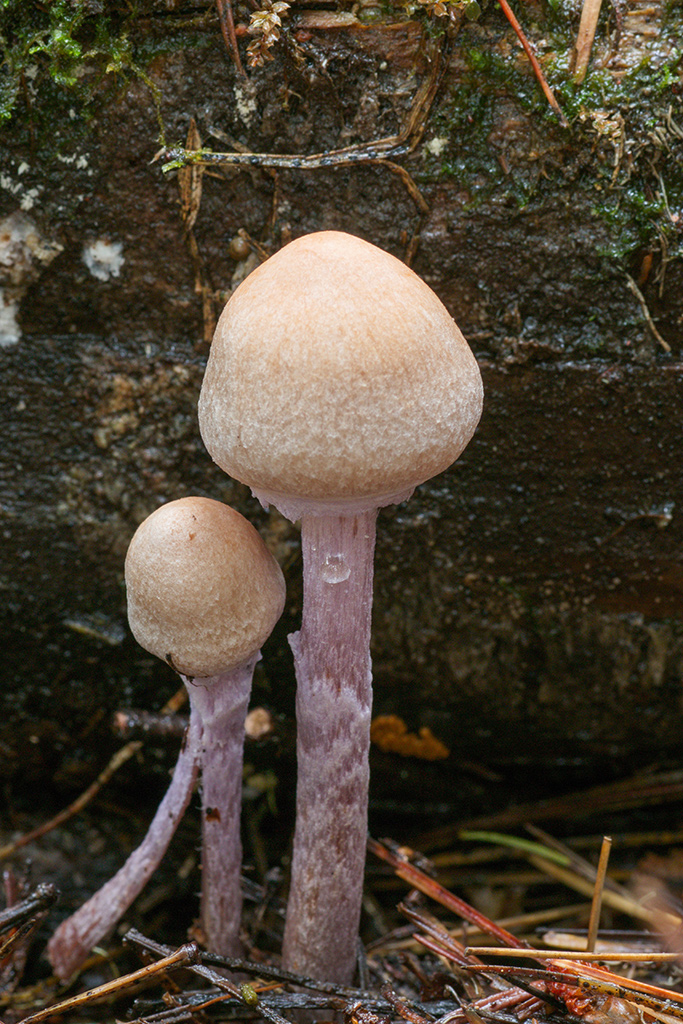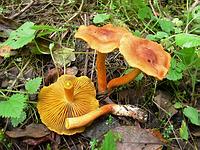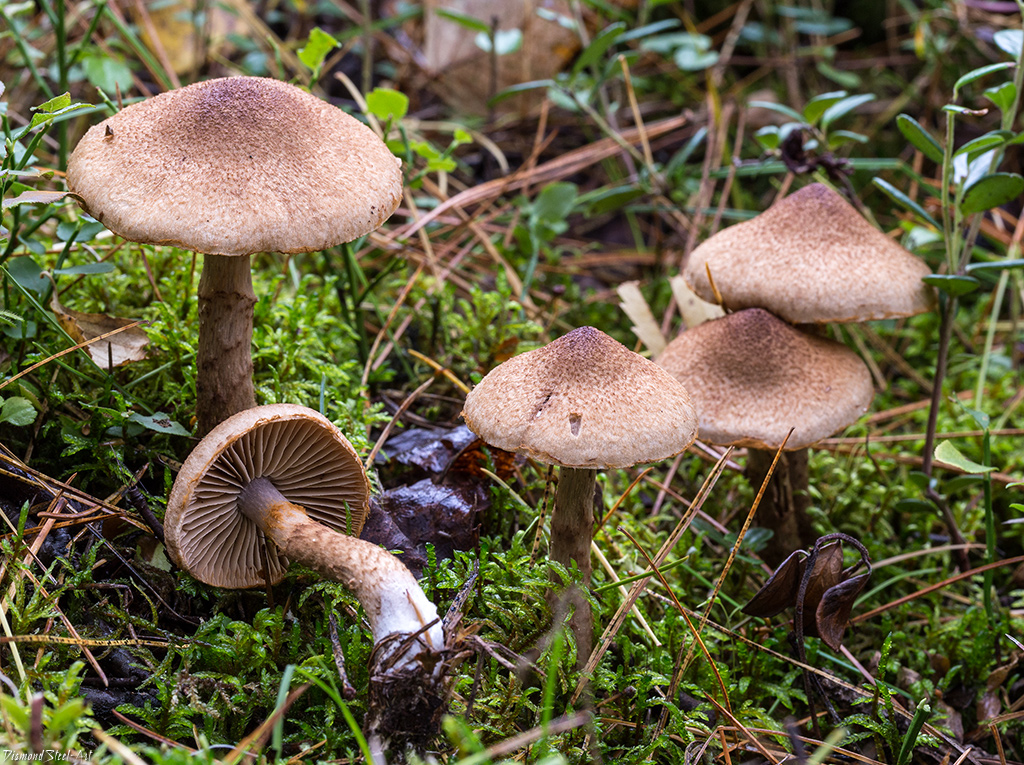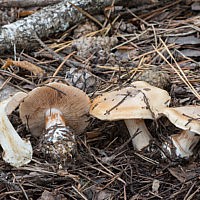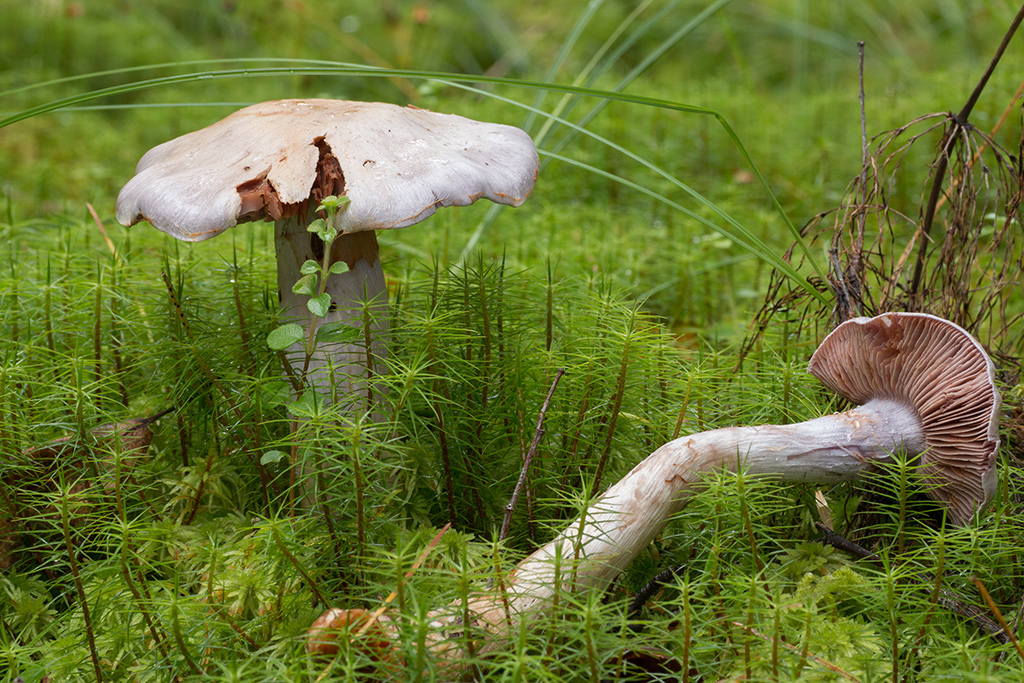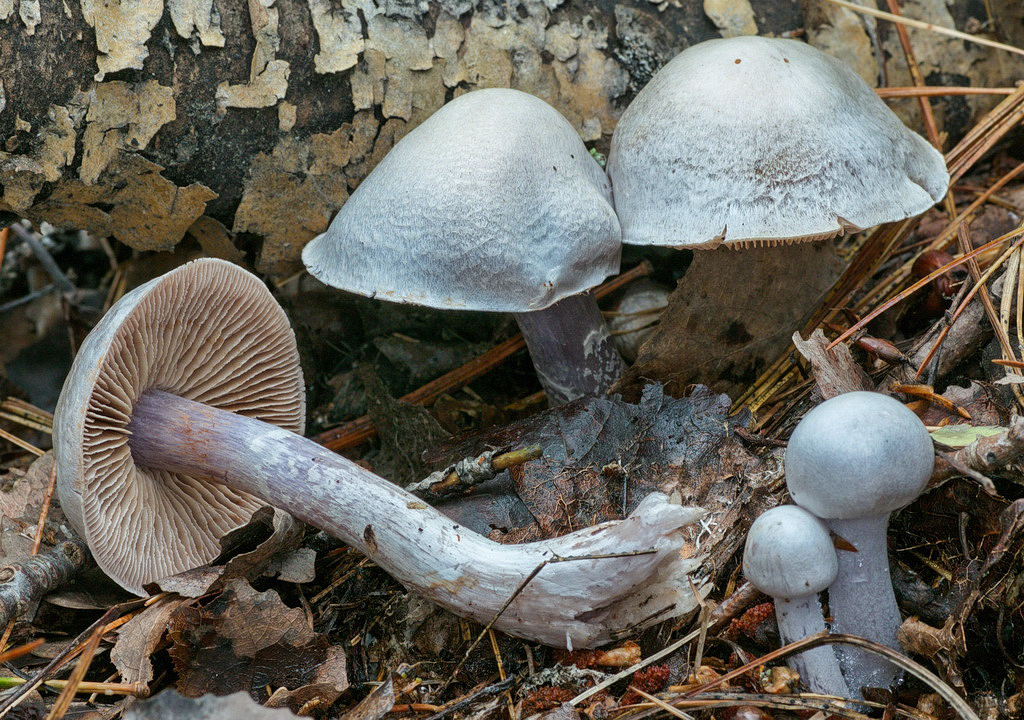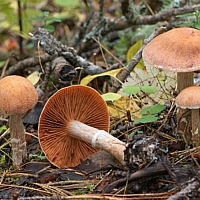Gallery: types of cobwebs (45 photos)

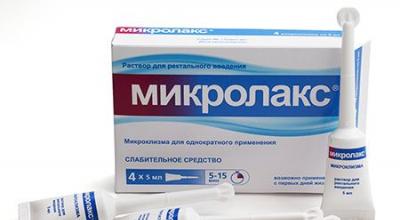







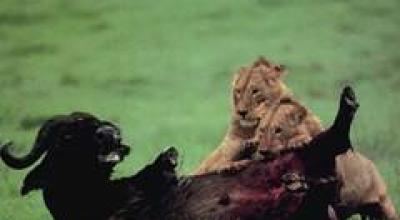
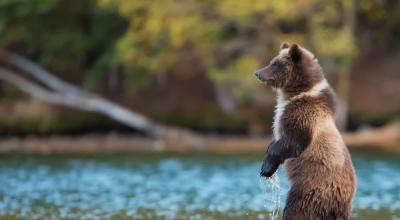

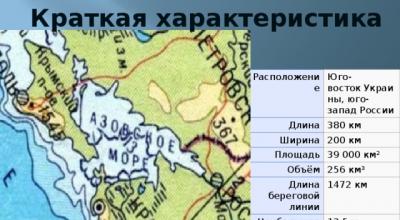

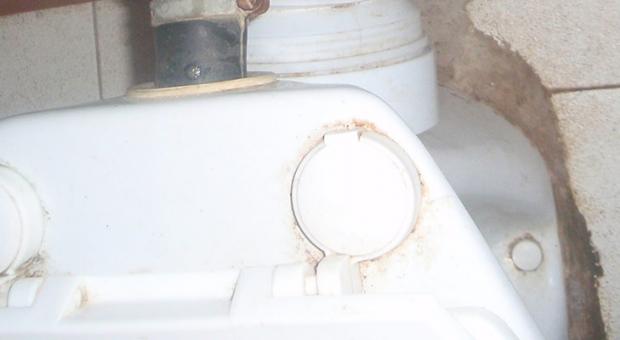
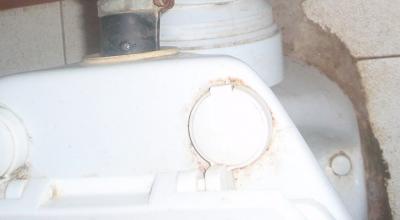


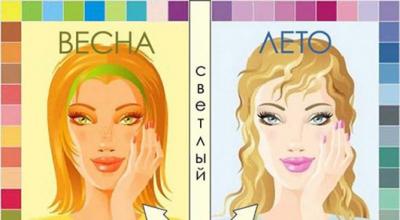
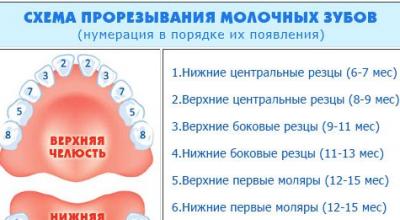
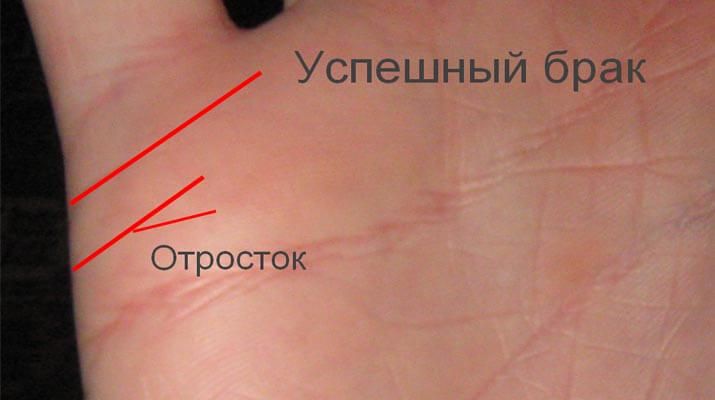








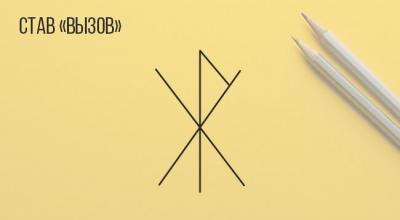

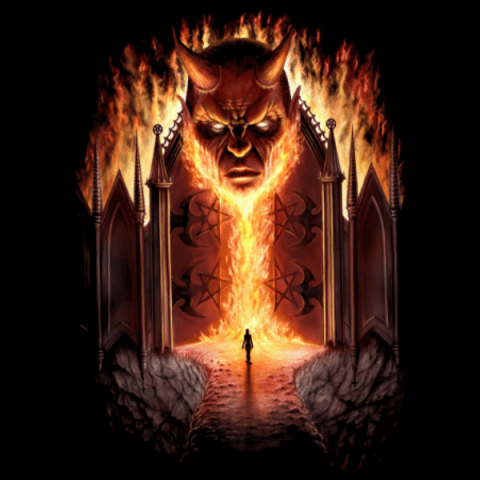
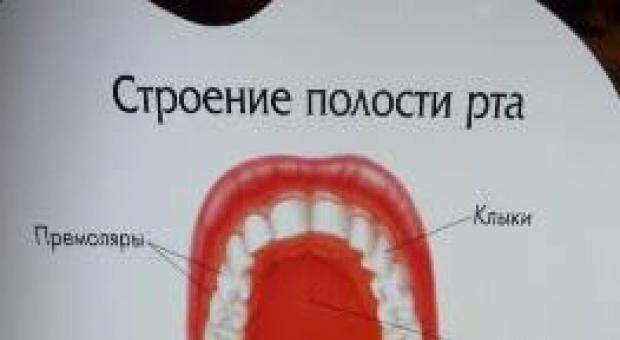


Cortin.triumрhans - has a hemispherical or cushion-shaped, half-open upper part of an orange-yellow coloration with the remnants of a bedspread and a sticky or dry surface covering a thick, soft, whitish-yellowish pulp with a pleasant aroma. The plates are weakly adherent, narrow and frequent, light smoky-cream or bluish-brown in color with a rusty-reddish-brown spore powder. The lower part of the fruiting body is strongly thickened, cylindrical in shape.

Cortin.albоviolaceus - has a rounded bell-shaped, convex or convex-outstretched cap with an elevation in the central part and a silky fibrous, shiny, smooth, sticky surface of lilac-violet-silver or white-lilac coloration. Plates are medium-frequent, narrow, grayish-blue, gray-ocher or brownish-brown, with the presence of rusty-reddish-brown spore powder. The area of the leg is clavate, with weak mucous membrane. The soft part is thick and watery in places
, gray-blue, brownish, with an unpleasant odor.

Cortin.armillatus - has a hemispherical, gradually opening, cushion-shaped cap with a wide and obtuse tubercle in the central part, covered with dry and fleecy, orange or reddish-brown coloration with remnants of a red-orange-brown blanket. The soft part is thick and dense, brownish in color, with a pronounced musty odor in the absence of mushroom taste. Plates of an adherent type, wide and relatively sparsely located, grayish-cream, slightly brownish or rusty-brown in color, with brown-rusty-red spore powder. The lower part of the fruiting body is lighter
, with an extension at the base, with bracelet-like remains of the bedspread.
The webcap is special
Cortin.rubellus - has a conical or prostrate-conical cap, with a sharp tubercle in the center and a fine-scaly, reddish-orange, reddish-orange or bright brownish surface, covering the tasteless and radish-smelling flesh of a reddish-orange-orangish tinge. Thick and wide plates are rare, growing to the stem,
orange-ocher or rusty-brownish color, with rusty-reddish-brown, spherical spores with roughness. The lower part of the fruiting body is cylindrical, of sufficient density.
Webcap purple (video)
Cortin.pholideus - has a bell-shaped, slightly convex, with a blunt elevation in the center and numerous scales of a dark brown coloration of the cap, covered with a pale brown, brownish-brown skin. It is distinguished by rare, grayish-brownish plates with a lilac-violet tint and the presence of a brown spore powder. The lower part of the fruiting body is cylindrical or weakly clavate, with an extension at the base, solid or hollow, with a smooth, grayish-brownish scaly surface. Loose type, gray-violet-brownish the pulp has a faint musty odor.
Kira Stoletova
One of the most common types of mushrooms in the temperate zone is the spiderweb mushroom. It belongs to the group of conditionally edible mushrooms. The genus Spiderweb from the family of the same name Spiderweb is dangerous because there are poisonous species.

Poisoning signs and first aid
The complex polypeptide orellanin, a toxin contained in the most beautiful cobweb, is not eliminated after heat treatment, changes in the acidity of the environment and drying. The main organ that is affected by it is the kidneys. Under its influence, the tissue structure is destroyed and the function of the organ is disrupted.
Even a small amount of poison can cause serious harm to the body: 40 g of fresh mushrooms can lead to death.
The peculiarity of orellanin poisoning is the duration of the symptoms.From the moment the mushrooms are eaten until the first signs appear, it can take from 7 to 14 days. Poisoning symptoms:
- intense thirst;
- dry and burning mouth;
- nausea;
- headache;
- intense pain in the kidney area;
- sensation of coldness in the limbs.
Death occurs in connection with acute renal failure, which proceeds rapidly and does not even respond to deterrent treatment.
If the outcome is not fatal, with prolonged nephropathy, the result is chronic renal failure.
Orellanin's unusually long latency makes diagnosis, first aid, and treatment difficult for poisoning
Therefore, mushrooms should be treated with extreme caution and refrain from eating even similar edible species. They are especially dangerous for children and the elderly.
What does a poisonous spiderweb mushroom look like (with photo)
Above, we looked at what cobwebs look like, suitable for eating, and now it is the turn of the inedible species. It is worth knowing that the poisonous spiderweb mushroom is very dangerous, since it can be fatal.
See what a poisonous spider web looks like in the photo, remember it and under no circumstances pick it up in the forest:
Lazy webcap (Cortinarius bolaris)
Lazy webcap in the photo
Lazy webcap in the photo
The mushroom is inedible. Caps up to 3-8 cm, at first hemispherical, then convex and finally open, clay-yellow, densely covered with large red or red-orange scales. In young mushrooms, the scales are glued to the surface of the cap; the yellow color of the surface is visible only as small gaps between the red scales. In mature mushrooms, the scales diverge along the surface of the cap and lag behind it at the edge. The plates are clay-yellow, then brown, turn red when damaged. Leg 5-7 cm long, 5-15 mm thick, cylindrical, reddish-fibrous, often scaly, like a cap. The pulp is whitish with a brownish tinge. Spore powder yellow-green.
Grows in deciduous, mixed and coniferous forests on acidic soil.
Fruiting from August to September.
It has no poisonous counterparts.
Goat webcap (Cortinarius traganus)
The goat webcap grows very abundantly in deciduous and coniferous forests
Goat webcap in the photo
The mushroom is inedible. Massive caps 3–12 cm, at first, spherical and lilac, then hemispherical and, finally, open ocher, with a fringed edge. The plates are buffy-yellow with a violet tinge, later brownish-ocher. The leg is lilac or yellow, with scales, 5-10 cm long, 2-3 cm wide, with an extension at the bottom. The pulp of young mushrooms is white-blue, then ocher with an unpleasant "goat" smell of acetylene.
The goat spider web has no poisonous counterparts.
The goat webcap is inedible due to the unpleasant smell of acetylene.
Common webcap (Cortinarius triviah)
Common webcap in the photo
Common webcap in the photo
The edibility of the mushroom is questionable. Caps up to 5-8 cm, at first hemispherical, then convex or open, mucous yellow-rusty-brown, dry straw-yellow Plates are white-gray with a violet tinge, later rusty brown. Leg yellow or bluish, 8-12 cm long, 1-2 cm wide, covered with mucus in the upper part, with dark belts in the lower part. The pulp is light, whitish-buffy, in old mushrooms with a weak unpleasant odor.
It looks like an inedible slimy spider web (Cortinarius mucosus) with a white leg.
The common webcap is not designated as a poisonous mushroom, but its edibility is in doubt.
Time and place of fruiting
As a rule, goat's webcap most often grows on the territory of coniferous and mixed forests (mainly where there are pines). It can be found in wet, mossy areas. On the territory of the Russian Federation, the mushroom bears fruit in the following areas:
- Leningradskaya;
- Murmansk;
- Sverdlovsk;
- Vologda;
- Yaroslavskaya.
He was spotted by mushroom pickers in the Krasnoyarsk Territory, as well as in Tatarstan and Buryatia.As for Europe, it can be found in the Czech Republic, Austria, Great Britain, Belgium, Hungary, Germany, Poland, Denmark, Estonia, Slovakia, Lithuania, Switzerland and Finland. But on the territory of North America and Africa, the cobweb does not grow.
The fruiting period begins in July and ends in late September - early October.
Spring webcap (Cortinarius vernus)
Description
A hat with a diameter of 2-6 (up to  cm, bell-shaped in youth, then prostrate with a lowered edge and a (usually pointed) tubercle, then flat-prostrate with a wavy edge and a little pronounced tubercle (it does not always survive to this type). The edges of the cap are smooth or wavy, often torn. The color is brown, dark brown, dark red-brown, black-brown, there may be a slightly purple tint, it may be lighter towards the edges, with a gray tint, it may be with a gray rim along the edge. The surface of the cap is smooth, radially fibrous, silky fibers, not always pronounced. Cobweb cover, light, breaks very early. The remains of the veil on the stem are light or reddish, not always noticeable.
cm, bell-shaped in youth, then prostrate with a lowered edge and a (usually pointed) tubercle, then flat-prostrate with a wavy edge and a little pronounced tubercle (it does not always survive to this type). The edges of the cap are smooth or wavy, often torn. The color is brown, dark brown, dark red-brown, black-brown, there may be a slightly purple tint, it may be lighter towards the edges, with a gray tint, it may be with a gray rim along the edge. The surface of the cap is smooth, radially fibrous, silky fibers, not always pronounced. Cobweb cover, light, breaks very early. The remains of the veil on the stem are light or reddish, not always noticeable.
The pulp is brownish-whitish, brownish-grayish, lilac tint at the base of the leg, different sources consider it to be from thin to rather thick, in general, average, like all telamonias. The smell and taste are not pronounced, according to different opinions, from flour to sweetish. The plates are not frequent, from adherent to the tooth and to slightly descending, ocher-brown, gray-brown, with a slight lilac shade or without, uneven, sinuous. After maturation, the spores are rusty brown.
Spore powder, rusty-brown. The spores are almost spherical, slightly elliptical, strongly warty, prickly, 7-9 x 5-7 μm, not amyloid. Leg 3-10 (up to 13) cm high, 0.3-1 cm in diameter, cylindrical, underneath may be slightly clavate, brownish , grayish, longitudinally fibrous, silky fibers, possibly redness at the bottom.
Habitat
Inhabits broad-leaved, spruce and mixed (with broad-leaved trees, or spruce) forests, parks, fallen leaves or needles, moss, grass, glades, roads, paths, from April to June.
Similar species
Bright red webcap (Cortinarius erythrinus) - Some (British) sources consider it even synonymous with the spring webcap, but at the moment (2017) this is not a generally accepted opinion. The view, indeed, is very similar in appearance, the only difference is in red, purple tones in the plates, nothing red in the spring cobweb is not even close, except for the possible reddening of the base of the leg. this, too, for now, just their opinion. The leg of this spider web is dark brown, turns black with age. This species is a mycorrhiza-forming, and does not occur in the absence of trees. Chestnut spiderweed (Cortinarius castaneus) - A similar species, but grows in late summer and autumn, does not overlap with spring in time.
Poisoning signs and first aid
Mushrooms are difficult to digest in the intestines, so they are not recommended for children, pregnant women, the elderly and those with a history of gastrointestinal problems. Symptoms of poisoning can appear as early as 1.5-2 hours after eating, and most often the victims complain of such ailments:
- nausea;
- vomit;
- severe pain in the abdomen, accompanied by diarrhea;
- cold limbs;
- weak pulse.
Also, doctors record inflammation of the small intestine and stomach. In some cases, in case of poisoning, a person may begin to delirium, fall into a state bordering on insanity, and hallucinations appear.
The manifestation of the above symptoms of poisoning is a reason to urgently call a doctor, and before his arrival, observe bed rest and drink plenty of clean water or cold strong tea. You can take activated carbon. In the case of timely seeking medical help, the condition often improves on the second day.
Therefore, it is so important not to self-medicate, wasting precious time.
Most of the spiderweb mushrooms are very similar to each other in their external characteristics, not all of them have a pronounced "grebe" look
Therefore, it is so important to become familiar with the description of poisonous fruit bodies and not collect questionable specimens.
Definitioner
- Basidia (Basidia)
-
Lat. Basidia. A specialized structure of sexual reproduction in fungi, inherent only in Basidiomycetes. Basidia are terminal (end) elements of hyphae of various shapes and sizes, on which spores develop exogenously (outside).
Basidia are diverse in structure and method of attachment to hyphae.
According to the position relative to the axis of the hypha, to which they are attached, three types of basidia are distinguished:
Apical basidia are formed from the terminal cell of the hypha and are located parallel to its axis.
Pleurobasidia are formed from lateral processes and are located perpendicular to the axis of the hypha, which continues to grow and can form new processes with basidia.
Subasidia are formed from a lateral process, turned perpendicular to the axis of the hypha, which, after the formation of one basidium, stops its growth.
Based on morphology:
Holobasidia - unicellular basidia, not divided by septa (see Fig. A, D.).
Phragmobasidia are divided by transverse or vertical septa, usually into four cells (see Fig. B, C).
By type of development:
Heterobasidia consists of two parts - hypobasidia and epibasidia developing from it, with or without partitions (see Fig. C, B) (see Fig. D).
Homobasidia is not divided into hypo- and epibasidia and in all cases is considered holobasidia (Fig. A).
Basidia is the place of karyogamy, meiosis and the formation of basidiospores. Homobasidia, as a rule, is not functionally divided, and meiosis follows karyogamy in it. However, basidia can be divided into probasidia - the site of karyogamy and metabasidia - the site of meiosis. Probasidium is often a dormant spore, for example in rust fungi. In such cases, probazidia grows with metabasidia, in which meiosis occurs and on which basidiospores are formed (see Fig. E).

See Karyogamy, Meiosis, Gifa.
- Pileipellis
-
Lat. Pileipellis, skin - differentiated surface layer of the cap of agaricoid basidiomycetes. The structure of the skin in most cases differs from the inner flesh of the cap and may have a different structure. The structural features of pileipellis are often used as diagnostic features in descriptions of fungi species.
According to their structure, they are divided into four main types: cutis, trichoderma, hymeniderma and epithelium.
See Agaricoid fungi, Basidiomycete, Cutis, Trichoderma, Gimeniderm, Epithelium.
- Cutis
-
The type of cap skin, consists of creeping non-gelatinized hyphae located parallel to the surface. The surface of the cap looks smooth.
Lat. Cutis.
See Gifa.
Interesting Facts
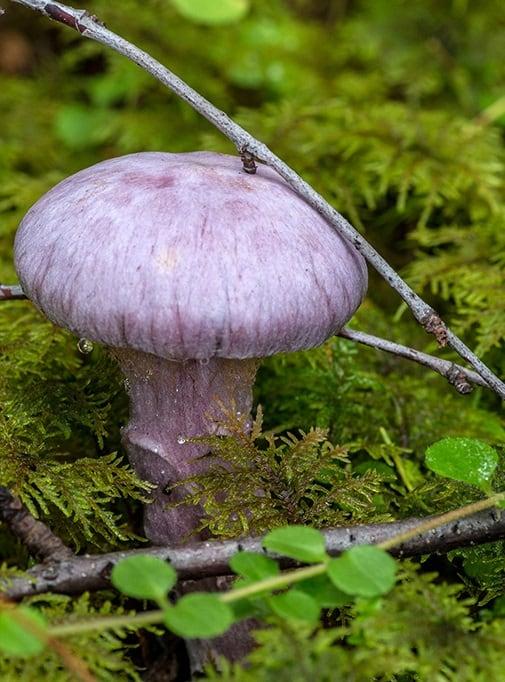 Despite the fact that Cortinarius traganus is considered poisonous, it is still able to benefit humanity, since it contains the antibiotic inolomin. Therefore, experts say the mushroom has antibacterial properties. Until the end, its toxic effect has not been studied, however, most often it is not eaten because of its unpleasant odor. In addition, the longer a given fruit body is boiled, the more disgusting the aroma becomes.
Despite the fact that Cortinarius traganus is considered poisonous, it is still able to benefit humanity, since it contains the antibiotic inolomin. Therefore, experts say the mushroom has antibacterial properties. Until the end, its toxic effect has not been studied, however, most often it is not eaten because of its unpleasant odor. In addition, the longer a given fruit body is boiled, the more disgusting the aroma becomes.
Some mushroom pickers claim that they managed to find a goat webcap with the smell of caramel, which turned out to be very tasty after hot salting. However, the information has not received official confirmation.
Going to harvest forest crops, it is important to apply all knowledge about mushrooms and carefully approach the choice, giving preference only to those species that are not in doubt. Among the cobwebs, there are a lot of poisonous specimens similar to edible ones, so it is best to be guided by a reasonable approach and not give in to the desire to take possession of rare prey.
Description of the marsh webcap
The diameter of the cap of the marsh spider web is 2-6 centimeters. The texture of the cap is fibrous-silky.The color of the cap can be copper-orange and brick-red. The shape of the cap varies from humpback to pointed.
The pulp is pale yellow in color, and immediately under the skin of the cap it has a reddish tint. The pulp exudes a faint smell of iodoform. The plates are bright yellow and become saffron as they age. Spores are almond-shaped or ellipsoidal, wide, lumpy.

In length, the leg reaches up to 10 centimeters, and its diameter does not exceed 8 millimeters. The leg is the same color as the cap. The texture of the stem is fibrous. A red belt remains on the leg, which is a trace from the bedspread.
Cortinarius uliginosus var. luteus Gabriel, unlike the type species, has an olive-lemon color.
Spread of swamp webs
Swamp cobwebs grow on wet soils. They settle next to willows, in more rare cases they are found in the vicinity of alder. Most often, these mushrooms grow in swamps, along the edges of rivers and lakes. They prefer lowlands, but can also be found in alpine regions where there are willow thickets.

Evaluation of the palatability of marsh cobwebs
There are no direct data on the edibility of marsh cobwebs. But it should be borne in mind that its relatives from the subgenus Dermocybe are poisonous, which means that it most likely contains toxins.
The similarity of the marsh webcap with other mushrooms
The marsh webcap has similarities with its congeners, for example, the saffron webcap, but the latter is much darker and grows in other places. But in general, the marsh webcap is a rather remarkable and bright mushroom. In addition, marsh cobwebs grow in swamps and are attached to willows, so it is difficult to confuse them with other mushrooms.

Related species
Big webcap - edible mushroom. The hat is of its convex-outstretched or convex shape. Its color is gray-purple. The pulp is lilac; it turns white with age. The stem is white or lavender, and the base is brownish.
Large cobwebs grow in deciduous and coniferous forests. They settle on sandy soil. These mushrooms are widespread in European countries. The best time to harvest is September.
Staining webcap is an edible mushroom. Its cap is 4-10 centimeters in diameter. At first, its shape is wide-bell-shaped, at the bottom it is tightly covered with a veil, after that the cap becomes convex, and even later - prostrate. The surface of the cap is sticky, slimy. The color of the cap is variable - yellow-ocher, orange-brown, ocher-brown, red-brown, with black-brown spots. In dry weather, the cap fades and becomes pale yellow. Leg length 5-10 centimeters. The cylindrical stem tapers slightly downward. The color of the leg is lavender or brownish.
The spiderwebs are soiling from July to September. They grow in mixed and deciduous forests. They settle in humid places. They are not common. Fruiting in small groups or singly.

How to distinguish between false doubles of a poisonous mushroom
Representatives of the Spiderweb genus are numerous and outwardly very similar. There are also mushrooms that are not related to him, but are similar to the most beautiful spider web. The main twins are presented in the table:
| Mushroom name | Description (differences) | Habitat |
| Mountain webcap | A dangerous poisonous mushroom. The leg is light yellow, tapers towards the bottom and the rings of the remains of the bedspread are not visible on it | Broadleaved forests next to oaks and beeches |
| Cobweb edible or bbw | Edible. The cap is bent down at the edges, the middle of the cap becomes flat or depressed with age, without a tubercle. The surface is damp. The color contains white-gray shades. The leg is straight, light. There is no radish smell. | Dry pine forests |
| Slime webcap | Conditionally edible. The size of the cap is up to 12 cm, the surface is covered with mucus. The leg is long and thin, up to 20 cm, light, with a blue tint. Rings and lumps may be visible on the stem. | Coniferous and mixed forests |
| The webcap is shiny | The most dangerous poisonous mushroom in the genus of cobwebs. The cap is bright orange, slimy. | Coniferous forests. Very rare |
| Tuberous honey fungus | Edible. Differs in a pale yellow leg without belts.The color of the plates in mushrooms is also different, in honey agarics it is white or light yellow, and in the spider web it is bright red-brown. | Coniferous and mixed forests |
| Mokruha purple | Edible. The cap is red-brown, shiny, slimy. In young mushrooms, the center of the cap has purple tints, fades and evens out with age. The stem is cylindrical, often curved, fibrous, sticky. | Coniferous and mixed forests. Forms mycorrhiza with pine and birch. |

